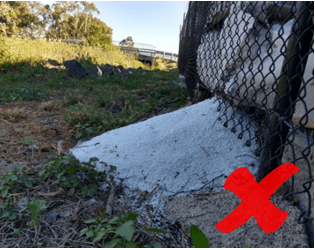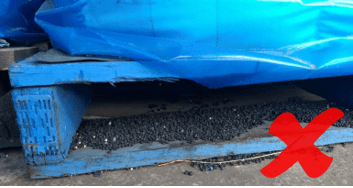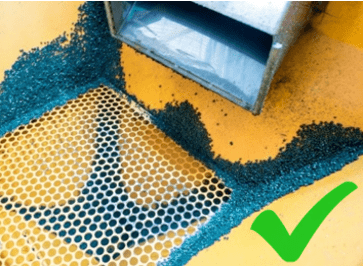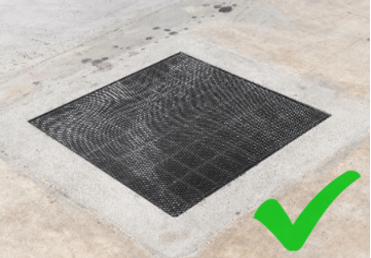Plastic feedstock is the raw material used to make plastic products. It can be in the form of:
- flakes
- powder
- recycled chips
- resin pellets.
Plastic products include:
- drink bottles
- electronics
- food containers
- medical supplies
- pipes
- rainwater tanks
- textiles.
Plastic feedstock can be released into the environment as residue or material offcuts (swarf). This can happen during product manufacturing, installation or maintenance.
Plastic feedstock and the law
Under the general environmental duty, you must eliminate or reduce the risk of your plastic feedstock entering the environment so far as reasonably practicable.
If you’re responsible for plastic feedstock entering the environment, the duty to take action to respond to a pollution incident may apply to you.
Discarded, rejected, abandoned, unwanted or surplus plastic feedstock is considered industrial waste. Waste duties apply to the management of this waste.
Penalties apply if you do not meet these duties.
Our role in plastic feedstock
We regulate the transport, storage and disposal of plastic feedstock waste.
We support industry to meet the general environmental duty when using and managing plastic feedstock.
Impact of plastic feedstock on human health and the environment
Plastic feedstock can:
- be blown into the air
- enter freshwater and marine habitats as microplastics
- attract chemical pollutants to its surfaces
- be eaten by animals and harm their health
- enter the food chain and harm human health.
Manage plastic feedstock
You must manage plastic feedstock across all stages:
- design
- production and re-manufacturing
- packaging and distribution
- consumption
- use and reuse
- collection and recycling.
If you manage plastic feedstock, follow a risk management process to help you:
- meet the general environmental duty
- save on costs
- reduce your impacts on human health and the environment
- follow the principles of environment protection in the Environment Protection Act 2017(opens in a new window)
- improve your circular economy outcomes
- improve your workplace safety
- meet community expectations
- avoid fines and prosecution.
Following a risk management process involves:
- identifying hazards
- assessing risks
- implementing controls
- checking controls.
Identify hazards
Look at your operations to find points where control of the plastic feedstock may be lost – for example, storage.
Assess risks
Assess the risk of uncontrolled release of plastic feedstock into the environment during:
- production
- re-manufacturing
- packaging
- transfer and transport
- storage and handling
- use and reuse
- installation
- maintenance
- collection
- recycling
- disposal.
Implement controls
Your controls must eliminate or reduce the risk of plastic feedstock entering the environment. This could include:
- conducting regular site inspections and formal audits to monitor plastic feedstock release or potential release
- implementing good housekeeping procedures, such as keeping outdoor bin lids closed
- training staff and inducting contractors on appropriate handling of plastic feedstock on site, including spill capture
- including plastic feedstock management in standard operating procedures, such as environment management plans and health, safety and environment plans
- considering relevant industry information for more guidance on controls – for example, Operation Clean Sweep Australia.(opens in a new window)
You should also have controls that limit the release of plastic feedstock into the environment if something does happen – for example:
- catch trays, bunding and wide-mouth hoppers for preventing and containing spills
- portable vacuums and cleaning equipment located in easily accessible areas
- drain mesh guards, baffles, booms and skimmers for rainfall events
- shoe brush stations
- barrier curtains to prevent loss from inside areas.
Check controls
Monitor your controls to make sure they work as planned.
You can monitor by:
- walking around your site to check controls are in good working order and working as intended
- looking at site boundaries and exit routes where plastic feedstock can escape – for example, slopes, concourses and unprotected drains
- maintaining and servicing equipment and machinery
- checking staff awareness
- checking the supply chain for points where plastic feedstock could be released
- speaking to suppliers and customers about arrangements for receiving plastic feedstock deliveries.
Images courtesy of Tangaroa Blue Foundation, Association of Rotational Moulders Australasia, Chemistry Australia and Plastics Industry Pipe Association of Australia.
Updated





